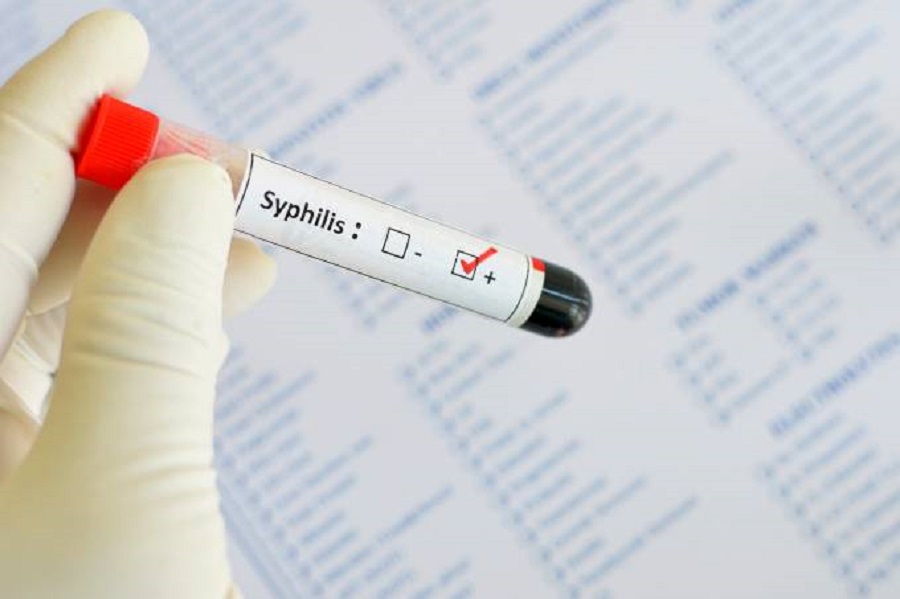RIO DE JANEIRO, BRAZIL – Between January and June 2020, 49,000 occurrences of acquired syphilis were recorded, according to Ministry of Health data. This figure represents a drop of over 35% compared to the previous year’s data – in the whole of 2019, 152,900 cases were confirmed. However, the positive figures do not reflect reality, experts say.
The Covid-19 pandemic has complicated access to tests and, consequently, to the diagnosis of the disease caused by the sexually transmitted Treponema pallidum bacterium.
“Many people have not been able to get a consultation or tests if they suspect the disease. There are also many who are reluctant to visit a health center or hospital for fear of further exposure to the Covid-19 virus,” explained the Brazilian Society of Dermatology (SBD) vice-president Heitor de Sá Gonçalves.

“We have at least some 30% of cases not being reported: when we used to have 100 cases, only 70 are now reported. Consequently, people are still sick, they don’t start treatment and continue transmitting the disease,” Gonçalves says. This scenario may result in uncontrolled syphilis in the future, with a sharp increase in transmission rates.
From 2010 through 2020, Brazil registered 783,000 cases of acquired syphilis, with significant growth of the disease, according to an SBD survey. Currently, the bacterial disease affects mainly the male population in Brazil. From the total number of cases registered in the past 10 years, 59.8% were men and 40.2% were women. The disease is also a risk for newborns.
GLOBAL INCREASE IN SYPHILIS CASES
Besides Brazil, there is an upward trend in sexually transmitted infection cases in developed countries, such as the United States. In the past decade, syphilis has become a North American public health problem. After a historic low between 2000 and 2001, the syphilis rate has been gradually increasing every year. For instance, the growth rate reached 11% between 2018 and 2019, according to SBD.
“It is an international trend, and Brazil is part of the group of nations with alarming numbers, because it is a disease with a serious progression, even fatal, if not treated properly and early. It is essential that physicians and public authorities remain alert, acting in educational prevention actions and supporting the diagnosis and treatment stages,” the doctor says.
WHAT IS SYPHILIS?
Syphilis is a Sexually Transmitted Disease (STD). A person infected by the Treponema pallidum bacterium will most likely present skin conditions, such as small red sores and, depending on the degree of the disease, lesions spread all over the body. The advantage is that the disease has a simple and effective treatment, through the use of benzathine penicillin, but the problem is the stage of syphilis when diagnosed.
The disease can be classified as primary, secondary, latent, or tertiary syphilis. In the primary stage, the infection usually manifests itself as a small sore at the site of entry of the bacteria, which may be the penis, vagina, cervix, anus, or mouth. The sore usually appears a few days after infection, is generally painless, and disappears on its own.
However, when the infection goes untreated, the disease evolves into secondary syphilis stages. At this point, blotches, papules, and other lesions may occur on the body, including the palms of the hands and soles of the feet, in addition to fever, discomfort, headache, and swelling. This is just another example of its potential manifestations.
To prevent being infected, the safest way is to use the male or female condom during sexual intercourse. In addition, every patient who has risky sexual activities or is exposed to unprotected sex should be regularly tested for STDs; the tests are free of charge in the Brazilian public health system SUS.
SYPHILIS IS ALSO A RISK FOR NEWBORNS
In addition to acquired syphilis, congenital syphilis may also occur. This is transmitted through the placenta from mother to child. As a result, the newborn may show symptoms that include low birth weight or difficulty in gaining weight, neurological sequelae, joint inflammation, bone pain, visual loss, and reduced hearing or deafness. In parallel, the disease may cause miscarriages, premature births, and neonatal death.
Therefore, Gonçalves stresses that all pregnant women and sexual partners should be screened for STDs during prenatal care and at the time of delivery, particularly for HIV, syphilis, and viral hepatitis B and C. In addition, they should be advised about the risk of transmitting the diseases to the baby.
SYPHILIS IN NUMBERS
In the first half of 2020 alone, Brazil registered 8,900 diagnoses of the disease in newborns, that is, 1,500 patients every month. Eleven years before, in 2010, the average stood at around 579 monthly records.
In the period from 2010 through 2019, cases increased from 6,946 to 24,130 diagnoses per year, according to SBD data. Again, early diagnosis is the best approach for the safety of babies.

